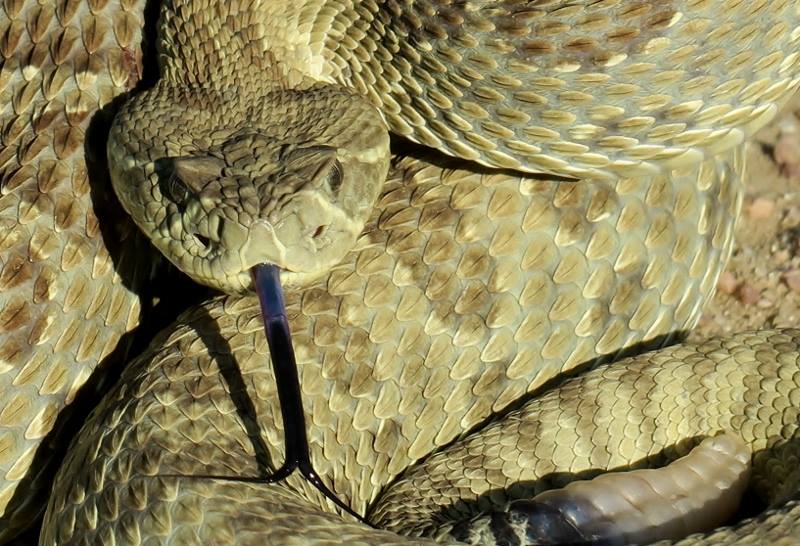
Rattlesnakes have fascinated me since one scared me halfway to Jesus when I was about five. We lived in Kingsville, Texas at the time. The snake lay on the path between me and home. I saw it before it saw me and promptly hauled my little bottom back to the neighbor’s house to report the sighting. An older person summarily dealt with the snake. A few minutes after seeing the unfortunate creature consigned to a grave, I calmed down and started wishing I’d gotten a better look at it. When I mentioned this to the college professor who lived on the other side of us, that dear lady promptly went out and bought me a book on snakes. I couldn’t read yet, but I spent hours pouring over the pictures.
Training for a southern childhood includes thorough indoctrination in how to deal with encounters of the slithery kind. As a child, I rarely went outdoors without my mother hollering, “Watch for snakes!” as I left the house. The last time she issued that warning, I was forty-seven and had almost thirty years of field experience. Snakes terrified my mother, though not so much that she couldn’t wield a hoe to rid the yard of one. She tried to indoctrinate me with terror as well, believing it was the best way to protect me. Well, that backfired. I became obsessed with snakes, specifically rattlesnakes. The adrenaline rush of unexpected encounters just added to the fascination.
Yeah, I know how crazy that sounds, but just look at them! Tipped with rattles at one end, retractable fangs at the other, and an amazing muscular legless body in between- what could be more fascinating than a rattlesnake? As if that isn’t fine enough, they possess facial pits that detect infrared radiation and translate it into thermal images, allowing rattlesnakes to “see” warm-blooded prey or predators even in complete darkness. Heat-sensitive membranes within the pits can detect temperature changes of 0.003 °C. Those pits gave rise to the name “pit vipers.” All rattlesnakes are pit vipers, but not all pit vipers are rattlesnakes. In the United States, copperheads and water moccasins are also pit vipers. Worldwide there are roughly two dozen pit viper species and dozens more sub-species.
My personal snake epiphany came when I was eight years old and attending Camp Wilderness Girl Scout Camp near the King Ranch. Two college students arrived and sat down under a mesquite tree to give a presentation on reptiles. One of my clearest memories is of a cheerful dark-haired girl holding an indigo snake in her hands. From a careful distance, I watched it wrap around her wrists and arms. I moved a little closer, then a lot closer. Before long, I sat down on the ground next to the student so I could watch the snake’s tongue flick out to taste the world. When the girl invited me to touch the shining blue-black snake, I put a hesitant finger on its back. The rise and fall of its breath and the movement of its muscles captivated me. As I stroked the snake’s smooth scales, the college student explained the difference between fearing a creature and respecting it.
I didn’t grow up to be a herpetologist, but that experience under the mesquite tree in the Texas summer heat put me firmly on the road to becoming a naturalist. Every snake sighting is a blessing, but I still like to see them before they see me.
